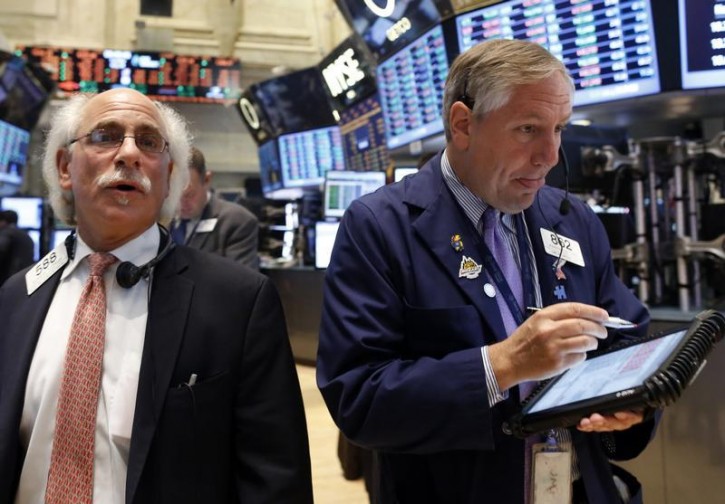 New York – Stocks rose on Tuesday, with the Dow closing at yet another record high, in the wake of Wall Street’s first three-day losing streak of the year, after central banks reassured investors that they will keep policies designed to foster global growth.
New York – Stocks rose on Tuesday, with the Dow closing at yet another record high, in the wake of Wall Street’s first three-day losing streak of the year, after central banks reassured investors that they will keep policies designed to foster global growth.
Subscribe to our Daily Roundup Email
Consumer confidence was the strongest in May in over five years, while home prices accelerated in March by the most in nearly seven years. The reports showed the U.S. economy’s resilience despite the pinch of belt-tightening from automatic cuts in federal spending.
Equity investors have been very attuned to monetary policy, with the major U.S. stock indexes last week posting their first negative week since mid-April on lingering concerns that the Federal Reserve may scale back its stimulus measures sooner than expected.
Those concerns were eased after the Bank of Japan and the European Central Bank reaffirmed that their accommodative policies would remain in place, helping indexes recover from last week’s decline.
On Monday, when U.S. markets were closed for the Memorial Day holiday, ECB Executive Board member Joerg Asmussen said the policy would stay as long as necessary. On Tuesday, BOJ board member Ryuzo Miyao said it was vital to keep long- and short-term interest rates stable.
But even with the reassurance, speculation persisted that a tapering of the Fed’s bond-buying plan could be on the horizon, sending U.S. Treasury debt yields to their highest levels in over a year and pulling equities back from their session highs.
“It doesn’t seem that we are in the environment that produces a 35 percent-plus year at this point,” said Bryan Novak, director of trading at Astor Asset Management in Chicago.
“So you have rates starting to jump up at the same point as you have a little bit of concern over some other economic activity at the same time. It makes for a little bit of uneasiness.”
Monetary stimulus has contributed to Wall Street’s gains this year, with the S&P 500 up nearly 17 percent. Analysts have also cited earnings growth and relatively cheap valuations as reasons that investors have used any decline as a buying opportunity, helping drive both the Dow and the S&P 500 to a series of record highs.
Cyclical sectors, closely tied to the pace of economic growth, are likely to advance on any sign of continued supportive policies. Bank of America
The Dow Jones industrial average < .DJI> gained 106.29 points, or 0.69 percent, to a record 15,409.39 at the close. The Standard & Poor’s 500 Index < .SPX> added 10.46 points, or 0.63 percent, to finish at 1,660.06. The Nasdaq Composite Index < .IXIC> rose 29.74 points, or 0.86 percent, to end at 3,488.89.
Luxury retailer Tiffany & Co
Discount brokers such as E*Trade Financial Corp
The price of Omthera Pharmaceuticals
Fannie Mae
Volume was modest with about 6.25 billion shares traded on the New York Stock Exchange, NYSE MKT and Nasdaq, slightly below the daily average of about 6.4 billion.
Advancing stocks outnumbered declining ones on the NYSE by a ratio of about 18 to 13, while on the Nasdaq, nearly nine stocks rose for every four that fell.

I miss the days of the Limbots telling us about how they were shorting the market in anticipation of the the impending double-dip recession, the crash of the stock market, the further crash of the housing market, hyperinflation, the increase in unemployment, the exponential growth of their Glenn Dreck gold coins, and the arrival of the apocalypse. Woops.
True. But if you are investing in silver and gold responsibly and for the right reasons – not to make a quick buck but as a long-term hedge against inflation (which is inevitable when dealing with fiat currency), then you are aware that 4 years is not a very long time. And although there have been times in history when silver and gold have declined, their long-term trend has almost always been up ever since the dollar was taken off gold and silver, and this is because inflation and current devaluation has almost consistently been a reality since that time. I am confident it will continue this way, seeing as central banks have no other weapon at all but to print and inflate. Even just the fact that this article admits that the recent surge in stock prices was due simply to reassurances from central banks (rather than actual economic progress) is telling.